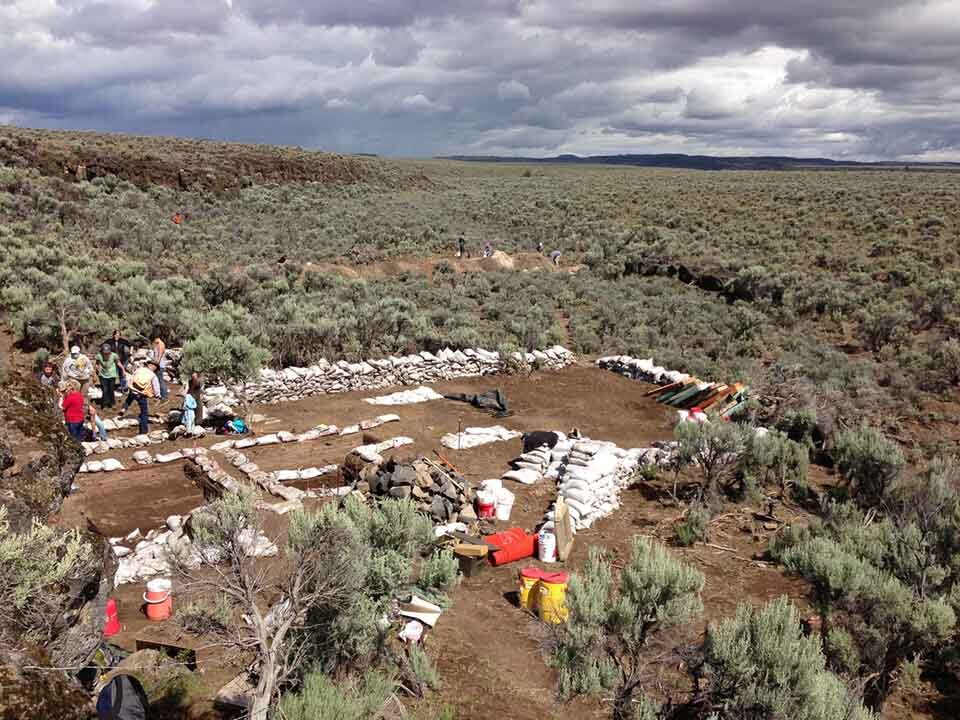Oregon Could Be Home to North America’s Oldest Human-Occupied Site, Dating Back Over 18,000 Years

Prepare yourselves, boys and girls, because some archaeology news just dropped! That’s right, as the time continues to march onwards and our societies continue to develop, we continue to uncover more things about the past.
Over in Oregon, a research team has uncovered evidence that humans may have roamed the beaver state over 18,000 years ago. In other words, we may have uncovered North America’s oldest human-occupied site yet.
I’m going to emphasize that “yet” part right there, because we can guarantee that this is far from the oldest site ever. The only difference is that this one was preserved by the eruption of Mount St. Helens. No, I’m not talking about the one in the 1980s; Mount St. Helens erupted 15,000 years ago, covering everything around it in ash, which can also be a good way to date how old certain discoveries are. If something is found beneath the layer of ash, for example, then it’s without a doubt older. So, let’s move onto the actual findings.
So what was found? Well, we’re going to have to go backwards a decade or so, as this has been more than a few years in the making.
Ever since 2011, the Bureau of Land Management (BLM) and the University of Oregon’s Museum of Natural and Cultural History Archaeological Field School have partnered together in order to excavate the Rimrock Draw Rockshelter next to Riley, Oregon. The major discovery was made in 2012 by archaeologist Patrick O’Grady. Underneath the 15,000 year old layer of ash, they found camel teeth fragments. Yes, camel teeth, from an animal that is mainly known for traversing Africa and the Middle East.
Along with that they found an orange agate scraper with bison blood residue, and in 2015, they found yet another scraper. According to experts at BLM, the “natural layering of the rockshelter sediments” suggests that the scrapers were even older than the volcanic ash and the camel teeth. So, how old are we talking?
Well back in 2018, experts did some radiocarbon-dating analysis (a scientific method that can accurately determine the age of organic materials that go back approximately 60,000 years), followed by some double-checking this year, before finally coming out with their conclusion: the teeth date back to approximately 18,250 years ago, older than any known human-occupied North American site yet discovered.
Let’s take a moment to think about that. 18,250 thousand years ago, millions and millions of years after the continents had split away from the supercontinent known as “Pangea”, there was a camel. This camel roamed in the place we now know as Oregon, probably the furthest place you’d ever think to find a camel, other than the arctic or the bottom of the ocean. There were multiple camels in Oregon, in fact, but there was one that had been roaming near Riley, Oregon. Then, one day, this camel died. The rest of its species within the North American continent died off as well over time, but because of Mount St. Helens, this particular camel’s teeth were preserved just long enough for researchers to find over 18 millennia later, and thus becoming the sole piece of proof that we as a species roamed Oregon 18,000 years ago; and I bet these ancient Oregonians were still rooting for the Ducks. Humans, just like you and I, roamed around simply trying to get by and survive. They built tools, had families, hinted, gathered, and grew to help shape the United States as we know it today. It makes one wonder what life may have been like all those years ago.
When discussing this finding, O’Grady said, “The identification of 15,000-years-old volcanic ash was a shock, then Tom’s 18,000-years-old dates on the enamel, with stone tools and flakes below were even more startling.”
Heather Ulrich, leader of BLM Oregon/Washington Archaeology, said that the evidence uncovered, if factual, is an exciting development for those in the field.
“Thanks to the partnership with Dr. O’Grady and the University these new dates push our archaeological knowledge of human occupation in North America even farther, perhaps the oldest yet!” Ulrich had said.
Is this the oldest site we’ve found? It is, but many archaeologists know that we may be able to find even older signs of human occupation within North America. We just have to know where to look, is all. Who knows what the next discovery will tell us?

Comments are closed.